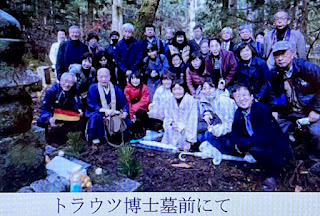 |
| 津田繁二(Tsuda Shigeji) |
Given the presence of multiple individuals sharing the same name, inherent ambiguity clouds the identification of this particular Tsuda. The conclusion drawn regarding his potential role as a historian rests on inferred deductions from the available timeline and his address, rather than being a definitive assertion. The assessment tends towards the likelihood of Tsuda's involvement in historical pursuits due to the apparent alignment of the timeline and his address with such interests.
津田繁二(Tsuda Shigeji)長崎市本紙屋町五八 Nagasaki-shi, Motokamiya-machi 58
I lean towards the belief that our Tsuda was indeed a historian. His historical fascination, notably his specific focus on old Japanese coinage, hints at a profound connection to historical study and enthusiast engagement in that field. Moreover, his association with 福岡古泉会 (Fukuoka Kosenkai) notably bolsters the likelihood of his active participation in a group dedicated to antiquities and historical artifacts.
 |
| 長崎談叢 26 |
One of his notable works, '我長崎県の先史時代及び原史時代の遺蹟及び遺跡物の概略に就て' in 長崎談叢#26, delves into the overview of relics and remains from the prehistoric and protohistoric eras in Nagasaki Prefecture.
I believe our Tsuda Shigeji might be the same person referenced on a Japanese old coins blog site: https://kosenmaru.sub.jp/kannei0-10.html - dated May 18, 2014, and July 12, 2014 as well. But unless we can definitively identify his handwriting, absolute attribution remains elusive. Nonetheless, the evidence at hand strongly leans towards our Tsuda's promising identification in this context.





.jpg)
.jpg)










































